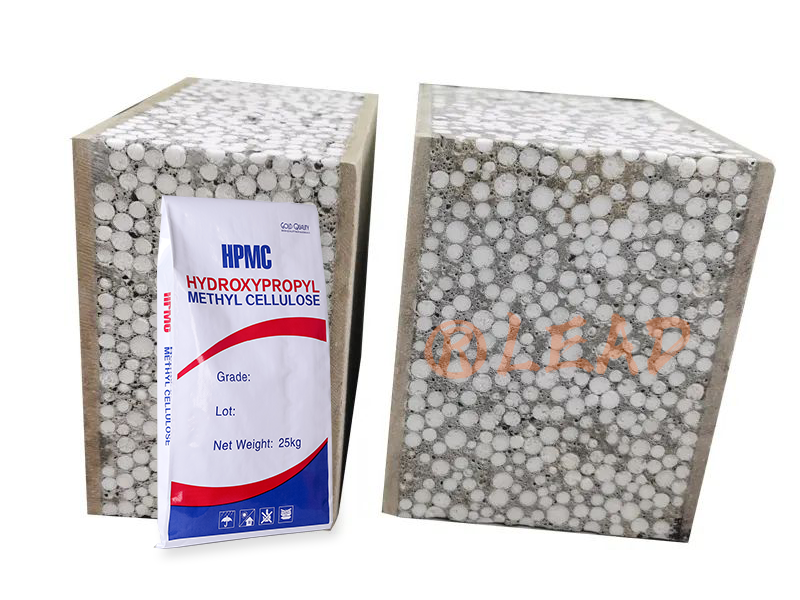Views: 9 Author: Yida hpmc Publish Time: 24-10-2025 Origin: Site
The global construction industry is undergoing a paradigm shift toward energy-efficient, durable, and sustainable building materials. Among these innovations, EPS (Expanded Polystyrene) polystyrene cement boards have emerged as a cornerstone for thermal insulation, lightweight structural components, and decorative facades. However, the true potential of EPS boards is unlocked when combined with Hydroxypropyl Methylcellulose (HPMC)—a versatile cellulose ether that revolutionizes material performance.
This article explores the scientific and practical benefits of integrating HPMC into EPS cement board formulations, addressing adhesion, durability, workability, and environmental resilience. By understanding the role of HPMC, architects, engineers, and manufacturers can optimize EPS board applications for residential, commercial, and industrial projects.

Hydroxypropyl Methylcellulose (HPMC) is a non-ionic, water-soluble polymer derived from natural cellulose through chemical modification with methyl and hydroxypropyl groups. Its unique molecular structure grants it exceptional properties:
Water Retention: Holds moisture in cementitious matrices, preventing premature drying and cracking.
Thickening: Increases viscosity, improving material cohesion and reducing segregation.
Film Formation: Creates a protective layer that enhances adhesion and water resistance.
Rheology Control: Optimizes flow properties for easy application and finishing.
In EPS cement boards, HPMC acts as a multifunctional additive, bridging gaps between organic (EPS beads) and inorganic (cement, sand) components. Its compatibility with other polymers, such as redispersible polymer powders (RDPs), further amplifies its benefits.
EPS beads, while lightweight, have low surface energy, making them prone to detachment from cement matrices. HPMC addresses this by:
Improving Interfacial Bonding: HPMC molecules form hydrogen bonds with both EPS surfaces and cement hydrates, creating a mechanical interlock.
Reducing Air Void Formation: Its thickening effect minimizes air entrainment, ensuring dense, void-free boards.
Synergy with RDPs: When combined with redispersible polymers, HPMC enhances flexural strength and crack resistance, critical for impact-prone facades.
Case Study: In external insulation and finishing systems (EIFS), HPMC-modified adhesives demonstrate 30–50% higher pull-off strength compared to traditional cement-based mortars, ensuring long-term stability even under thermal cycling.
Manufacturing EPS cement boards requires precise control over mixture consistency. HPMC optimizes:
Pumpability and Extrusion: Reduces friction in production lines, enabling smooth flow into molds.
Anti-Sagging Properties: Prevents slumping in vertical applications, such as wall panels.
Extended Open Time: Slows down cement setting, allowing workers more time to adjust and finish surfaces.
Data Insight: A 0.3–0.5% HPMC dosage by weight of cementitious materials can increase mixture workability by 40–60%, reducing labor costs and material waste.
EPS boards are exposed to moisture, freeze-thaw cycles, and UV radiation. HPMC mitigates these risks by:
Waterproofing: Forms a hydrophobic barrier on board surfaces, lowering water absorption rates by 20–30%.
Frost Resistance: Reduces ice crystal formation in pores, preventing microcracking.
Dimensional Stability: Minimizes shrinkage and warping during curing and service life.
Field Test: In humid climates, EPS boards with HPMC exhibit 50% less surface efflorescence (salt deposition) compared to untreated boards, preserving aesthetic appeal.
While EPS inherently provides insulation, HPMC refines these properties by:
Reducing Thermal Bridges: Ensures uniform density, eliminating weak spots where heat could transfer.
Sound Dampening: Enhances the board’s ability to absorb and dissipate vibrations, improving acoustic comfort.
Research Findings: Boards with HPMC show a 15–20% improvement in sound transmission class (STC) ratings, making them ideal for noise-sensitive environments.
HPMC-modified adhesives and base coats ensure seamless bonding of EPS insulation panels to concrete or brick substrates. This prevents delamination, a common failure mode in regions with extreme temperature swings.
For interior applications, HPMC-enhanced EPS boards offer:
Reduced Dead Load: Lighter than traditional gypsum boards, easing structural design.
Fire Resistance: When combined with fire-retardant additives, HPMC boards meet stringent safety codes.
HPMC improves the printability and color retention of EPS-based decorative panels, enabling intricate designs for architectural aesthetics.
In underfloor heating applications, HPMC-treated EPS boards provide thermal insulation while resisting compression under load.
Typical Range: 0.2–0.6% by weight of cementitious materials.
Testing Protocol: Conduct pilot batches to balance workability, setting time, and strength.
Moisture Control: Store HPMC in cool, dry conditions to prevent clumping.
Mixing Sequence: Add HPMC to water first, then incorporate dry mixes to avoid agglomeration.
RDPs: Use 3–6% redispersible polymers for synergistic flexibility.
Fibers: Add polypropylene (PP) fibers (0.5–1%) to enhance crack resistance.
Particle Size Analysis: Ensure HPMC granules meet manufacturer specifications (e.g., D50 < 50 µm).
Rheological Testing: Verify viscosity and yield stress to confirm batch consistency.
As the industry prioritizes circular economy principles, HPMC is poised to play a pivotal role:
Bio-Based HPMC: Researchers are developing HPMC from agricultural waste, reducing reliance on petrochemicals.
Smart Additives: Nanotechnology-enhanced HPMC could enable self-healing EPS boards that repair microcracks autonomously.
Carbon-Neutral Production: Manufacturers are optimizing HPMC synthesis to lower energy consumption and CO₂ emissions.
The integration of HPMC for EPS boards is not merely an additive choice but a strategic imperative for modern construction. By enhancing adhesion, durability, and environmental resilience, HPMC empowers EPS cement boards to meet the demands of energy-efficient, high-performance buildings.
For manufacturers and specifiers, investing in HPMC technology translates to:
Longer Service Life: Reduced maintenance and replacement costs.
Design Flexibility: Enabling complex architectural forms without compromising structural integrity.
Sustainability Credentials: Aligning with green building certifications like LEED and BREEAM.
As the construction sector evolves, HPMC will remain indispensable in unlocking the full potential of EPS polystyrene cement boards—a testament to the power of chemistry in shaping the built environment.
Shijiazhuang City, Hebei Province, China
0311-88100555
[email protected]





